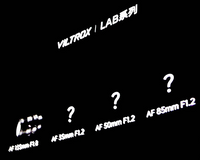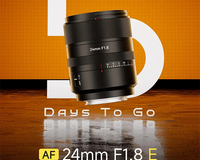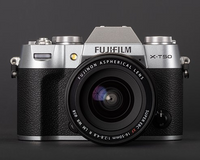When you are a beginner photographer, some of the phrases in photography you may feel a little confusing. Focal Length and Zoom Length are examples. Today, I will tell you the focal length and zoom length and all this basic information I hope helpful for taking many great photos.
Focal Length Definition
Firstly, we will know what is the focal lengths. I got some words from Wikipedia:
"The focal length of an optical system is a measure of how strongly the system converges or diverges light; it is the inverse of the system's optical power."
We know that the focal lengths are always used in the description of the lens’s size. Therefore, some beginners may think that the focal length is Len’s physical dimensions. The optical measurement means the shape of the lens.
Technically, lens size is the distance between the rear nodal point and focal point of the lens when the lens is in infinity. Put it simply, focal length refers to the distance between the lens and image sensors when making the subject in focus.
Focal length represents the millimeters, such as pergear 25mm, 7artisans 10mm. Pergear 25mm means 25mm of focal length and 7artisans means that 10mm of focal length. For the given focal length, the number can inform us the angle of the view and how wide open this lens and how many subjects will be shot.
If you want to take a great photo with focal length, and you also need to know that the small focal length has a bigger field of view and angle. The bigger the focal length is, the narrower your angle of view will be.
Short Focal Length and Long Focal Length
Focal Length also has two types – short focal length and long focal length. Now, let me introduce the short focal length firstly. The short focal length means that you can get a broader angle of view and lower magnification when taking pictures. Conversely, the smaller number will cover many subjects and let photographers capture the large scope of view. In general, a short focal length is suitable for landscape and architecture photography.
When it comes to long focal length. It is the opposite. Long focal length means that you can take a narrow scope of the scene because the bigger number of focal lengths refers to a small angle of view but can make the focused subject larger. With this kind of focal length, you can have a shallow depth of field and focus on a small subject or make the subject closer. The long focal length is good for sports and wildlife photography.
Lens Focal Length Comparison
Wide Angle Lenses
This kind of lens has a short focal length with a wide field of view. A Wide-Angle lens can allow photographers to capture much more scenes and it is suitable for landscape and any other scene which needs more background information appeared images.
Standard Lens
Standard lens matches human being’s eyes.
Standard lenses are closet to human’ eyes. Compared to other camera lenses, photographers, in general, use the maximum aperture and allows a lot of lights entering the lens to take natural-looking and outstanding pictures with natural light instead of a flash. This lens can create some zoomed-in and zoomed out images separately.
This kind of lenses is suitable for close portrait photography and landscape photography and some other photography that needs a wider sperm of the scene.
Such as Pergear 35mm, Pergear 25mm.
Telephoto Lens
It is believed that the telephoto lens can improve your photography skills and take you to the next level in your photography career. A telephoto lens is equipped with a small focal length which allows photographers to take the subject that is far away from them or make the subject magnify in the frame. In general, a lens between 70mm and 200mm is well-welcomed for many photographers, especially for the product, wildlife, and natural photography. These are some benefits for some telephoto lens:
Make subjects close to the camera;
Highlight the backgrounds;
Good at creating some flattering portraits.
Macro Lens
The macro lens is an outstanding camera lens and enables photographers to take very close to the subject and get some excellent and detailed images of microscopic things. In general, this kind of lens has a magnification ratio of 1:1, along with around 12 inches in the minimum focusing distance.
Zoom and Prime Lens
As photography newbies, they often feel confused about these two types of camera lenses- zoom lens and prime lens. Now, let’s talk about these camera lenses. Zoom lenses have a variable focal length while prime lenses have a fixed focal length. Then let’s learn what some benefits these two kinds of lenses have.
When it comes to zoom lenses, it has a lot of advantages. The first benefit is its multipurpose. You can take different types of pictures, such as landscape photography, portrait photography.
You can take many pictures once you control the focal length based on the situation and lighting conditions. While prime lens appears lightweight and compact in comparison with a zoom lens.
It has a fixed focal length and cannot allow photographers to take many different pictures, However, it has a maximum aperture (f1.4/f2.8), which means that you take shots in the low-light condition.
Additionally, prime lenses can offer a shallow depth of field and soft and blurred background. A great addition to your pictures.












